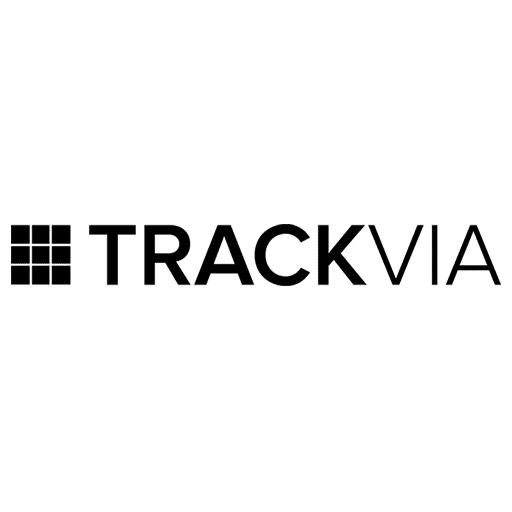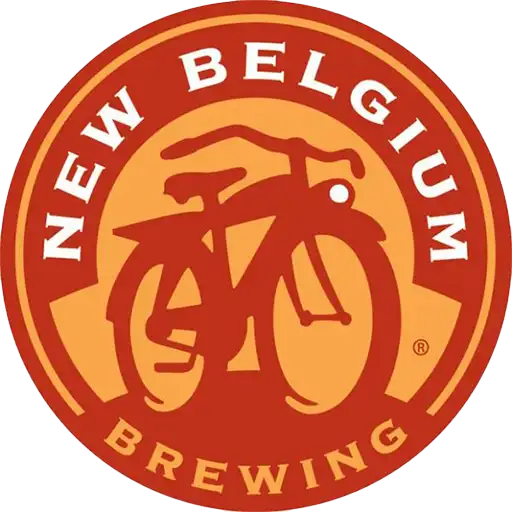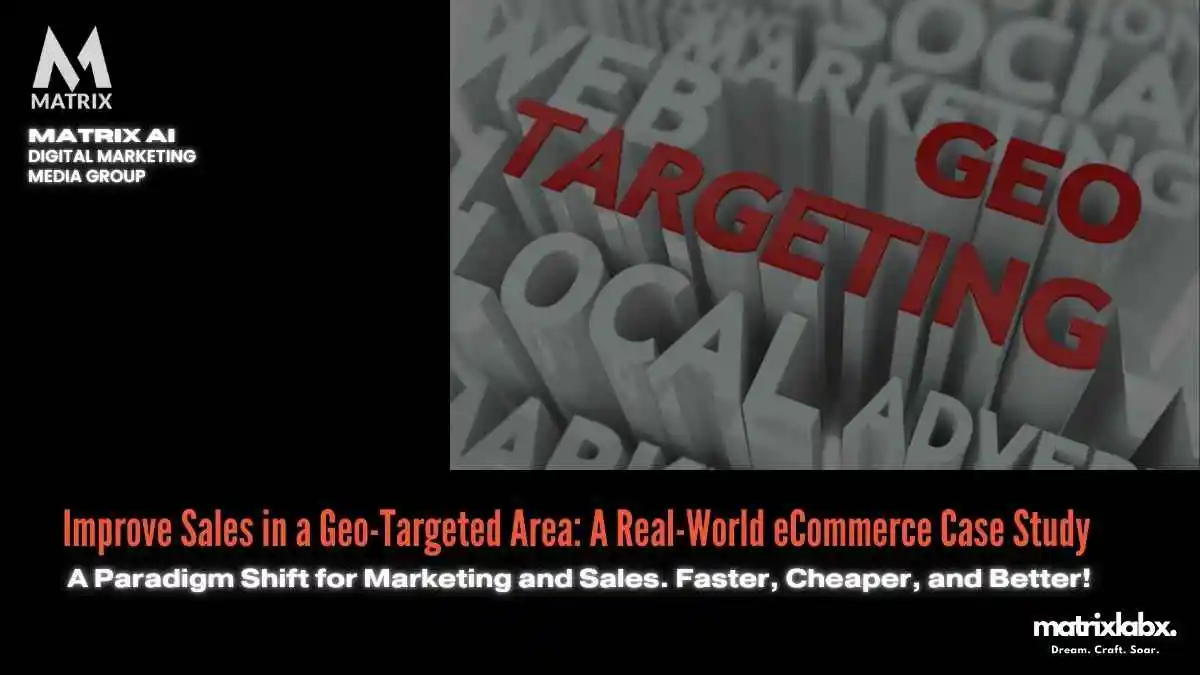How to Improve Sales in a Geo-Targeted Area: A Real-World eCommerce Case Study
Learn How to Improve Sales in a Geo-Targeted Area: A Real-World eCommerce Case Study.
Improving sales in a geo-targeted area is both an art and a science. Whether you’re a small business, a local service provider, or an eCommerce store, localizing your marketing efforts is key to dominating your regional market.
In this article, we’ll examine a real-world case study of a nutrition eCommerce store that started from scratch—with no SEO, backlinks, and zero brand awareness—and scaled to significant organic traffic using simple, tactical methods.
We’ll walk through each step and show how you can implement these strategies in your geo-targeted campaign.
Build the Foundation Before You Build the Brand
In this case study, the first phase involved ensuring the website’s technical and structural integrity before implementing marketing tactics.
This is called “Build the Foundation Before You Build the Brand.” It means focusing on the website’s functionality and user experience (UX) before aggressively pursuing growth or brand awareness.
Key Actions in This Phase for A Real-World eCommerce Case Study
Site Speed Optimization
- Optimized the website theme.
- Compressed images.
- Removed unnecessary plugins.
- Used a Content Delivery Network (CDN).
Clear Product Structure
- Revamped categories and filters.
- Logically grouped products.
- Added rich, unique product descriptions.
Mobile Optimization
- Tested on various devices, including budget Android phones.
- Adjusted layouts and tap targets.
- Improved loading times specifically for mobile users.
Google Ads Checklist – Download Now! 🚀
Struggling to get the most out of your Google Ads? 🔥 Download our Google Ads Optimization Checklist and take your campaigns to the next level!
✅ Maximize Clicks & Conversions
✅ Lower Your Cost-Per-Click (CPC)
✅ Improve Ad Quality Scores
✅ Target the Right Audience
This free checklist will help you set up, optimize, and scale your Google Ads campaigns for maximum ROI.
Benefits of Building a Strong Foundation
Building a strong foundation is the cornerstone of sustainable growth—whether in business, branding, or digital infrastructure. It ensures long-term stability, minimizes costly rework, and sets the stage for scalable success.
Investing in early foundational elements creates clarity, consistency, and trust, amplifying all future efforts.
| Benefit | Description |
|---|---|
| Improved User Experience | A fast, well-structured, and mobile-friendly site provides a better experience for visitors, making them more likely to stay and engage. |
| Enhanced SEO Performance | Google’s Core Web Vitals update prioritizes sites with good UX. A solid foundation improves search rankings. |
| Increased Conversion Rates | Users who can easily navigate and find information are more likely to purchase. |
| Reduced Bounce Rates | Fast loading times and mobile optimization prevent users from leaving the site immediately. |
| Better Return on Marketing Efforts | A strong foundation makes all subsequent marketing efforts, such as SEO and advertising, more effective. |
Risks of Ignoring the Foundation
Ignoring foundational elements like site speed, mobile optimization, or clear navigation can sabotage your growth strategy before it starts.
A fast, well-structured, user-friendly website isn’t just a technical detail—it’s the core driver of SEO, conversions, and customer trust. Without a strong foundation, all your advanced marketing tactics will fall flat.
| Risk | Description |
|---|---|
| Poor User Experience | Slow loading times, confusing navigation, and a poor mobile experience will frustrate users and lead them to leave the site. |
| Lower Search Rankings | Google penalizes sites with poor UX, resulting in lower visibility in search results. |
| High Bounce Rates | Users will quickly leave a site that doesn’t load fast or isn’t mobile-friendly, wasting marketing spend. |
| Decreased Conversion Rates | If users can’t find what they’re looking for or have a poor experience, they won’t purchase. |
| Wasted Marketing Budget | Driving traffic to a poorly performing site is ineffective and wastes resources. |
| Negative Brand Perception | A poorly functioning website can give a negative impression of the brand, damaging its reputation. |
Why You Don’t Always Need Overpriced SEO Tools
Expensive SEO tools aren’t always necessary for generating more sales, especially in a geo-targeted context:
1. Foundational Work Matters More
- Site Speed and User Experience: A fast, mobile-friendly site is critical. Google prioritizes these factors. No tool can fix a slow, poorly structured site. Focus on technical SEO first.
- Clear Product Structure: Well-organized categories, filters, and detailed product descriptions matter more than keyword rankings. Users need to find and understand products easily.
2. Local Insights Are Often Free
- Google Search Console: This free tool shows you what keywords drive traffic and impressions. It’s invaluable for spotting low-volume, high-intent opportunities.
- Facebook Groups: See what local customers are asking. This provides real-world insight into their needs and language.
- Competitor Analysis (Basic): Look at competitor product titles and reviews on Amazon, Etsy, or local sites. This reveals keywords actual buyers are using.
3. On-Page Optimization is Key
- Meta Titles and Descriptions: Focus on compelling copy that solves problems, not just keyword stuffing. Tools don’t write these for you; your understanding of the customer does.
- Internal Linking: Ensure pages link to each other logically. This improves navigation and SEO.
- Call-to-Action (CTA) Testing: A/B tests CTAs to see what converts best. Search Console can help track clicks.
4. Local SEO is About Presence, Not Just Rankings
- Optimize Google Business Profile (GBP) with photos, products, and updates. This is a free, powerful tool for local visibility.
- Local Directories: Submit to free, relevant directories. NAP (Name, Address, Phone Number) consistency is crucial.
- Geo-Tagged Images: Add location data to images. This reinforces local relevance.
5. Content Should Answer Questions
- Product Page Guides: Create “How-to” guides and FAQs based on customer feedback. This content is more valuable than generic blog posts.
- Comparison Tables: Help customers decide with simple visuals. This improves engagement and time on site.
6. Practical Steps Over Tools
- Consistency: Regular updates and improvements matter more than advanced tools.
- Understanding Buyer Intent: To target customers ready to purchase, focus on keywords with “Buy” + “Location.”
- Customer-Centric Approach: Answer real questions and address concerns. This builds trust and drives conversions.
Key Takeaway for our Real-World eCommerce Case Study
- Start with the basics: Site speed, UX, local GBP, and customer-focused content.
- Use free tools like Google Search Console for initial insights.
- Focus on real customer behavior and questions, not just rankings.
- Overpriced tools often provide data you can gather through simpler, free methods.
By prioritizing these practical steps and utilizing free resources, you can significantly improve sales without investing in expensive SEO tools.
How to Improve Sales in a Geo-Targeted Area
Phase 1: Build the Foundation Before You Build the Brand
We started by understanding the fundamentals before touching SEO tools or running ads.
We have clients in large cities like Denver and Los Angeles, but this works for small businesses we service in small regions like Burlington, Vermont, and Paradise, California.
- Site Speed Optimization: Users bounce fast from slow sites, especially on mobile. We optimized the theme, compressed images, removed unnecessary plugins, and used a content delivery network (CDN). Page speed insights improved from 53 to 92 on mobile.
- Clear Product Structure: Categories and filters were revamped. Products were grouped logically (e.g., “Acne Solutions,” “Anti-Aging Kits”), and every product had a detailed, unique description that included benefits, usage instructions, and customer reviews.
- Mobile Optimization: We didn’t just test on high-end phones. We tested the site on budget Android devices. Layouts were adjusted, tap targets were optimized, and loading times were improved specifically for mobile users.
Key Lesson: Don’t chase growth if the foundation sucks. Google’s Core Web Vitals update penalizes poor UX. This groundwork made everything that followed 10x more effective.
Phase 2: Local Keyword Research Without Overpriced Tools
Maximize your local sales without breaking the bank. Our proven strategies leverage free resources like Google Search Console and social insights, eliminating the need for expensive SEO tools.
We help you identify high-intent local keywords and optimize your online presence, ensuring you reach ready-to-buy customers in your area.
By focusing on practical steps and understanding local buyer behavior, we drive real results and measurable conversions without unnecessary costs.
With our cost-effective, data-driven approach, you can grow significantly and dominate your local market.
Instead of relying on big-budget SEO tools, we went where the data was immediate and actionable.
- Google Search Console: Early impressions gave clues. We tracked which low-volume keywords users discovered the site with, even if impressions were under 100.
- Facebook Groups: We searched nutrition-focused Facebook groups to find what users were asking. Questions like “Best sports nutrition kits in [City]?” helped identify local long-tail opportunities.
- Competitor Product Titles & Reviews: We scraped Amazon, Etsy, and Shopify stores. Reviews helped us discover keywords real users were using, not marketers.
Pro Tip: Adding “Buy + [City Name]” in product page titles and descriptions changed local buyer intent. SEO managers often miss this.
Phase 3: On-Page SEO That Drives Clicks and Engagement
Enhance your eCommerce store’s visibility and drive conversions with our specialized on-page SEO strategies. We optimize meta titles and descriptions with compelling copy, not just keywords, ensuring higher click-through rates.
Through A/B testing CTAs and refining internal linking, we maximize user engagement and keep visitors browsing longer.
Our approach focuses on converting traffic into sales, providing measurable results and a significant return on your marketing investment.
Partner with us to transform your SEO from basic rankings to genuine customer engagement and revenue growth.
Once we had a strong keyword base, we refined our on-page SEO.
- Meta Titles: We tested urgency (“Limited Stock”), numbers (“Top 3 Nutrition Sets in Denver”), and benefits (“Better Health in 7 Days”).
- Meta Descriptions: We stopped stuffing keywords and instead used customer-focused copy. Descriptions answered, “What’s in it for me?”
- CTA Optimization: We ran A/B tests on CTA text using Search Console data. Buttons like “Order Now” converted worse than more specific ones like “Buy Nutrition Kit.”
- Internal Linking: We ensured every page was linked to at least 3 to 4 others. This helped spread authority and kept users browsing longer.
Key Lesson: SEO isn’t just about ranking—it’s about getting the click and keeping users engaged once they land.
Phase 4: Boosting Local Signals and A Real-World eCommerce Case Study
Most people skip local SEO when doing eCommerce. Big mistake.
- Google Business Profile (GBP): We created and fully optimized the profile, even though we were eCommerce-focused. Weekly photo updates, product uploads, and Q&A responses helped build credibility.
- Local Directory Listings: We submitted a curated list of free, high-quality niche directories. Think Nutrition-specific listings + local business indexes (e.g., Chamber of Commerce, Nutrition review blogs in the region).
- NAP Consistency: Every citation included the same Name, Address, and Phone Number. This helped build trust with Google.
- Geo-tagged Images: We uploaded photos with embedded geo-coordinates and added a map to the contact page with the business location pinned.
Key Lesson: Local SEO isn’t just for restaurants or hair salons. Even if you’re selling online, it reinforces trust and improves rankings for location-specific queries.
Phase 5: Content Strategy Without a Blog
Blogs can be time-consuming and often underperform if not executed right. We took a different approach.
- Product-Page Guides: Each product page included a “How to Use This for [Athletic Type]” guide. This guide addressed FAQs and real concerns, like “Can I use this if I have diabetes?”
- Built-in FAQs: We included FAQs derived from customer messages under every product. This improved UX and added natural long-tail keyword content.
- Comparison Tables: Simple visuals like “Vitamin C Serum vs Aloe Gel” helped users decide faster—and improved dwell time.
- No-Fluff Content: There are no random blogs. Every piece of content answers a real question our users were asking in support tickets, Instagram DMs, or live chat.
Key Lesson: Answer your customers’ questions before they ask them. This will lower bounce rates and increase conversions.
Measuring the Results for our A Real-World eCommerce Case Study
After 3 months of implementing this geo-targeted SEO and content plan, here’s what we achieved:
- 327,000 Impressions
- 10,720+ Organic Clicks
- Average CTR: 6.2%
- Multiple products ranking on Page 1 for high-intent keywords like “Buy Nuratition kits in [City].”
There are no gimmicks, no backlinks, just foundational SEO, local optimization, and content that solves problems. It’s easy to spend money on advertising online, but when the advertising dollars dry up, you have no more traffic. This is a mid-to-long-term strategy to move to a more predictable sales pipeline.




How You Can Apply This to Your Own Geo-Targeted Campaign
1. Nail the Technical SEO First:
- Speed matters. Optimize for mobile-first.
- Fix broken links and redirects, and ensure structured data is implemented.
2. Go Deep on Local Keyword Research:
- Use forums, social groups, and Search Console data.
- Always think in buyer intent: “Buy + Keyword + Location.”
3. Turn Every Page Into a Conversion Page:
- Each product page should teach, answer, and persuade.
- Embed comparison charts and address objections within the content.
4. Establish a Local Presence (Even if You’re eCom):
- Optimize GBP and embed a local map.
- Stay consistent with NAP across all platforms.
5. Prioritize Actionable Content, Not Fluff:
- Replace blogs with FAQ sections, how-to-use guides, and interactive tools.
6. Be Consistent, Not Perfect:
- You don’t need perfect backlinks or a flawless blog.
- Show up every week with updates, product enhancements, and localized content.
Return on Investment (ROI) from Thought Leadership SEO
Thought leadership SEO campaigns, which involve strategic planning and high-quality content creation, have demonstrated a return on advertising spend (ROAS) of 9.10, equating to a 748% ROI, with a typical break-even point at around 9 months. Review how to win with SEO Services.
Groundwork for Effective Conversions and Sustainable Growth
You don’t need to be a marketing wizard or an established brand to win in local SEO and our Real-World eCommerce Case Study.
Establishing a strong digital footprint is crucial before amplifying brand messages, as it lays the groundwork for effective conversions and sustainable growth. This can’t be shortcutted!
A solid digital foundation, including a fast-loading, mobile-optimized website with clear product structures and user-friendly navigation, ensures potential customers have a positive experience when they encounter your brand.
This initial positive impression increases engagement and reduces bounce rates, making visitors more likely to explore your offerings and consider purchasing.
Without this foundation, even the most compelling brand messaging can fall flat, as users may be frustrated by technical issues or a confusing website layout.
Furthermore, a well-built digital presence enhances SEO performance, essential for organic visibility. When your site is optimized for speed, mobile-friendliness, and clear structure, it aligns with Google’s ranking factors, improving your chances of appearing higher in search results. This organic visibility reduces reliance on paid advertising, lowering sales and marketing costs.
By attracting visitors who are already searching for products or services like yours, you ensure that your brand messages reach a more targeted and receptive audience, leading to higher conversion rates.
Additionally, a strong digital footprint allows for better data collection and analysis. Tools like Google Search Console provide insights into user behavior, keyword performance, and site issues. This data-driven approach enables you to refine your marketing strategies, optimize content, and improve user experience based on real user interactions.
Understanding what works and doesn’t allows you to focus your resources on the most effective tactics, further reducing costs and maximizing ROI. This targeted approach ensures your brand messages are louder, more relevant, and impactful.
AI Integration in Marketing
Nearly 60% of marketers now rely on AI to streamline processes, generate content, and analyze data, a trend expected to grow in 2025, underscoring the role of AI-driven DMaaS platforms in modern marketing strategies. See pricing.
Finally, a solid digital foundation builds trust and credibility. When potential customers see a professional, well-maintained website with detailed product information, customer reviews, and clear contact details, they are more likely to trust your brand.
This trust is crucial for conversions, especially in eCommerce, where customers cannot physically interact with the products before purchasing. By establishing a strong digital presence, you create a reliable and reputable image that reassures customers and encourages them to purchase, ultimately leading to higher sales and a more efficient marketing strategy.
Whether you’re running a nutrition shop or any other local eCommerce business, this case study proves that smart, practical moves can lead to measurable results.
Focus on your customers, understand their behavior, and optimize your store for Google and real people in your area.
That’s how you win locally. One optimized page at a time.
Case Study from a recent project with a Real-World eCommerce Case Study
For an ecommerce store in the nutrition niche. This wasn’t a big brand, with no existing SEO and backlinks starting from scratch.
What helped us grow? Let me break it down in a real-world way.
This is not theory, but stuff that moved the needle.
Affordable SEO Solutions That Drive Real Results
Matrix Marketing Group Delivers Customized SEO Strategies with Transparent Pricing for Maximum ROI. See SEO Services.
Phase 1: Getting the Basics Right Most people rush into backlinks or blogs. I started with cleaning up the basics:
- Site speed
- Clear product structure – categories, filters, and proper product descriptions
- Mobile optimization — made sure it loaded well on low-end phones.
Lesson: Don’t chase growth if the foundation sucks. Google notices slow/poor UX early. Phase
2: Keyword Research That Makes Sense Locally.
Initially, we avoided tools like Ahrefs/Semrush/MOZ and others — they were too broad.
Focused on:
- Search Console (early impressions help spot opportunities)
- Facebook search (what people ask in groups related to nutrition)
- Competitor product titles + reviews (to find long-tail keywords) Pro tip: Add “Buy” + “City” in your product pages naturally. It worked for local intent. Phase 3: On-Page SEO & CTR
Next, after keywords:
- Short, sharp meta titles (used numbers, urgency words)
- Descriptions that solve a problem, not just stuff keywords
- Structured internal linking: I made sure every page got the juice. I also tested different CTA buttons, like “Order Now” vs. “Buy nutrition Set,” and tracked which ones had more clicks in Search Console.
Phase 4: Local Signals Boost This is where most people mess up. I did:
- Google Business Profile (filled 100% with photos, products, and updates weekly)
- Submitted to only free local directories — focused on niche + local, not spammy ones
- I ensured the address, phone number, and brand name were identical everywhere. I also added geo-tagged images and embedded a map on the contact page. It might sound small, but trust me, it adds up.
Phase 5: Content Strategy That Doesn’t Rely on Blogging
Instead of traditional blogs, I created:
- “How to use XYZ for oily skin” guides on product pages.
- FAQs under each product based on customer DMs • Short comparison tables (e.g., Vitamin C serum vs Aloe gel) Tip: Don’t blog for the sake of it. Answer what your customer is already asking you. Results in last 3 Months:
- 137K Impressions
- 7.75K+ Clicks
- Avg. CTR: 5.6%
- Many products now rank on page 1 for buyer-intent keywords
If you’re working on a local store or thinking of starting one, this works.
It’s not about magic tools but consistency and understanding how local search behavior works. Win with A Real-World eCommerce Case Study that shows you the way to more sales.
Unlock Your Website’s Full Potential with a SEO Fix Program
Even the best websites can struggle without robust SEO. Our $2,500 SEO Quick Fix Package is crafted for businesses that demand fast, measurable results. We start with an in-depth SEO audit to diagnose your site’s performance, then implement five targeted optimizations to boost your rankings and drive more traffic.

